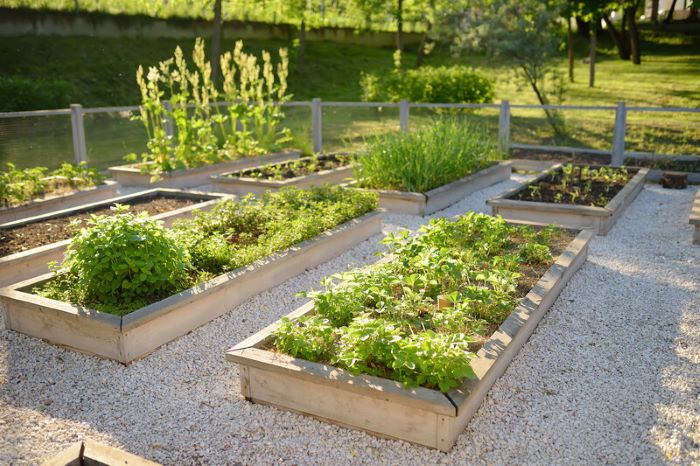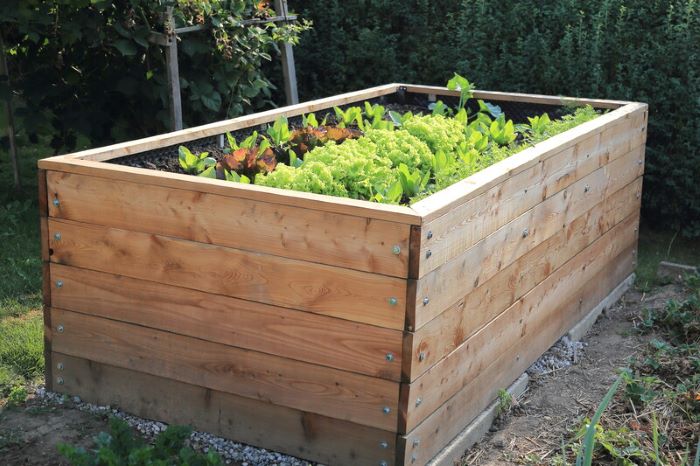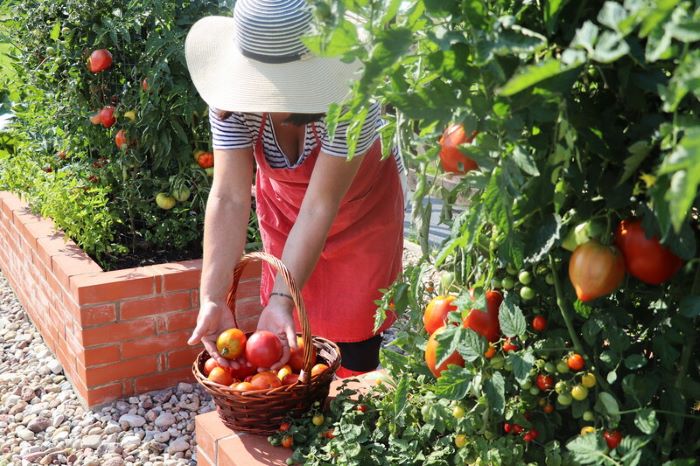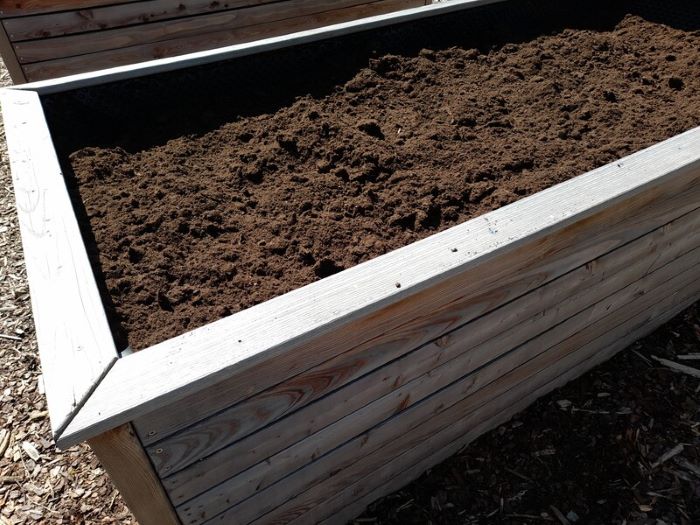This soil calculator will accurately calculate the soil you need to fill a raised bed. Whether you’re just starting your gardening journey or you’re a seasoned green thumb gardener, it’s important to know how much soil you will need to fill your raised garden bed. This is especially true if you are purchasing soil in bulk. So I’ve developed this valuable soil calculator to help you work out the right amount of soil for your raised bed!

Related: The Best Raised Garden Beds | Why Is My Raised Bed Growing Mushrooms? | Planning a Square Foot Garden
Table of Contents
Raised Bed Soil Calculator, For Quick Results
A soil calculator simplifies the process of estimating the amount of soil needed for your raised bed. Using this online calculator eliminates the need for complex manual calculations and ensures you get the right amount of soil without wastage or shortage.
Quick Guide to Using the Soil Calculator
1. Measure Your Raised Bed: Begin by measuring the length, width, and depth of your raised bed using a tape measure.
2. Enter Your Measurements: Input the measurements you’ve taken into the designated fields of the soil calculator below.
3. Click Calculate: After entering the measurements, click the “Calculate” button. The calculator will process the data and provide an estimated soil volume required for your raised bed.
4. Results: The calculated result will be displayed in cubic yards or cubic meters. This measurement gives you an idea of how much soil you need to fill your raised bed. Give it a try!
Soil Calculators for Raised Garden Beds
Raised Bed Soil Calculator Example Result
Let’s take the measurements of a raised bed that is 6 feet long x 3 feet wide and 12 inches deep.
The amount of soil needed to fill the raised bed is 0.67 cubic yards.
One cubic yard is also equal to 3 feet long, by 3 feet wide, and 3 feet high. To give you a better visual idea of what this looks like, one cubic yard is about the size of a washing machine!
While bulk soil is measured in cubic yards, bagged soil is measured in cubic feet or dry quarts.
To convert cubic yards to cubic feet, times it by 27. There are 27 cubic feet in 1 cubic yard.
In our example of 0.67 cubic yards, the cubic feet is 18.09.
To convert cubic feet to dry quarts, times by 25.7. There are 25.7 dry quarts in 1 cubic foot.
In our example, you will need 465.09 quarts of soil to fill your raised garden bed.
Sticking with our example above, you would need 10.3 bags (round up to 11) of this organic potting soil which is sold in 1.5 cubic foot bags.
Soil Volume in a Raised Bed

By now, you will have used the soil calculator and found out how much soil you need to fill your raised bed. This calculation gives you the volume of soil you need. So why is soil volume important?
In raised bed gardening, soil volume plays a major role in the health and productivity of your plants. The depth, length, and width of your raised bed collectively contribute to the overall soil volume.
A shallow garden bed will limit root development and won’t be good for growing carrots, for example. I’ve made this mistake before and ended up with wonky carrots because they didn’t have the space to grow! On the other hand, a raised bed that’s too deep can result in excess soil and wasted resources—it can get expensive to fill a raised bed if you’re purchasing soil.
So it’s a great idea to accurately calculate the right amount of soil to make sure your plants have the space they need to grow and thrive—without over-purchasing the soil you need.
Raised Bed Soil Depth

While soil volume is the total amount of soil, soil depth measures the vertical space from the surface to a specific depth below ground level, or in the case of a raised bed, the bottom on the bed. Soil depth is really important for successful plant growth because it impacts plant root development.
Different plants have varying root systems, so the depth of your raised bed should match the needs of the plants you intend to grow.
For shallow-rooted plants like lettuce, herbs such as parsley and cilantro and even radishes, a shallow raised bed is suitable. At a minimum, I recommend 6 inches (15 cm) of soil.
In contrast, deep-rooted plants like tomatoes and carrots require a deeper bed for optimal growth. Regular tomatoes for example should have 24 inches (60 cm) or a minimum of at least 18 inches (45 cm) soil depth.
However, if your raised bed is directly laid on top of the soil, then you can take into account that your plants will have access to the soil beneath the raised bed.
Types of Soil for Raised Beds

When it comes to choosing the right soil for your raised bed, quality is key.
Common options include topsoil 50%, compost 30%, and potting mix 20%.
Another soil mix is 1/3 compost, 1/3 peat moss or coconut coir, and 1/3 vermiculite or perlite.
You can create a custom soil blend by mixing these components in appropriate ratios to create an optimal growing environment for your plants.
High-quality soil is rich in nutrients, well-draining, and promotes healthy plant development.
Personally, I favor using a higher mix of compost and organic matter to create soil that is ‘alive’ with nutrients. For my raised beds I like to use the lasagna method which is a layering technique.
Lasagna Gardening For Raised Bed, Creates Delicious Soil
Lasagna gardening is a no-dig gardening method that can be used for raised beds. This method is also known as sheet mulching. The idea is to use layers of organic materials to create a fertile planting bed. Here’s how to do it:
Begin with a generous layer of cardboard. This serves as a weed deterrent, preventing unwanted weeds beneath your raised bed.
Now, gather small sticks or branches from your yard, or get creative with what you have on hand, as long as it can naturally decompose over time. I’ve even repurposed small pieces of wood from old animal enclosures, but feel free to skip this if wood isn’t readily available.
Next, start layering, alternating between nitrogen-rich and carbon-rich materials.
Nitrogen materials include your kitchen scraps, grass clippings, seaweed (if you have access to is), used coffee grounds, and manure such as cow or chicken.
Carbon materials are cardboard, paper, wood chips or shavings, bark, straw, and fall leaves.
Finish by topping the layers off with a 1-3-inch layer of nutrient-rich compost or high-quality soil. This final layer is what you will be planting into so you need to make sure it is nutrient rich.
Throughout the growing season, you’ll notice the soil level gradually settling as the layers beneath start to decompose, enriching your garden bed. When the time comes for a new planting season, simply replenish the bed with fresh layers.
This is a sustainable and efficient way to create fertile soil without the need for extensive digging.
Tips For Filling Your Raised Bed
Once you have your soil volume using the calculator, it’s time to fill your raised bed with soil! Here are tips to get you on your way:
- Use a layering technique like the lasagna method described above. Create layers of soil, compost, and organic matter to improve soil structure and nutrient content. I use this method a lot in my garden.
- Incorporate organic matter such as compost and other organic materials to enrich the soil and promote microbial activity. Organic material can include aged animal manure such as cow or chicken, as well as dried leaves and lawn clippings.
- Ensure your raised bed has adequate drainage to prevent water accumulation, which can lead to root rot. Having a free-draining soil composition will help with this.
- My final tip is to top your newly filled raised bed soil with cover your soil with natural organic mulch to protect it. Mulch will help keep the soil from drying out too quickly while providing additional nutrients to the soil as it breaks down over time.
Related:
